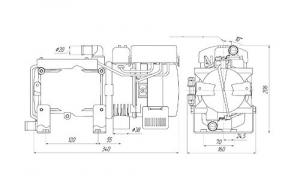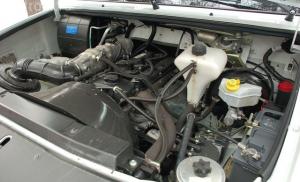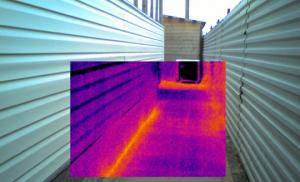Waste management activities in various countries. How different countries deal with garbage
Waste disposal is a serious problem even in the economic different countries. More and more waste is being generated, and scientists do not get tired of looking for new methods for the safe disposal of garbage, since storing it in specialized places (landfills) is economically inexpedient and environmentally unsafe. Today we want to tell you how this problem is solved in different countries of the world, the experience of which we should learn from.
General principles of waste disposal
Each country has its own methods of waste disposal, which are conditionally divided into three global approaches.
- liquidation. The most popular option, which involves isolation and the gradual destruction of garbage. This includes the removal of solid waste to landfills, specially designed sites, dumping into technical reservoirs, mines.
- Partial liquidation. Garbage is pre-treated, recyclable materials will be removed for recycling. The rest, not subject to recycling waste is disposed of in some way.
- Utilization. The use of all garbage is secondary. Combustible parts, combustible components, organic matter, and the rest is burned to produce energy or steam.
Civilized, economically developed countries are striving for a complete transition to a recycling method of waste disposal.
How garbage is disposed of around the world
Modern waste disposal technologies may well compete with the latest space developments. The emphasis is on environmental friendliness and mechanization of the extraction of components for reuse.
Italy: unique way separation of MSW
Separate collection MSW is a "trick" of Italy. For example, in Rome, garbage is taken to plastic bags, they extract recyclable materials from them, then they are divided into three fractions:
- large ones are allowed for magnetic separation;
- small ones are processed in a composter;
the remains are burned.
Food waste goes to enterprises that produce feed for ruminants. Organics are sterilized, processed and dried, then mixed with cornmeal, vitamins and trace elements, and granulated.
Sweden: automated recycling

In the Swedish city of Strömstad, there is a waste processing plant, where all the generated solid waste goes. Waste is crushed and sorted using a cylindrical screen. Fine fractions are mixed with sediments Wastewater in a special container, and then stacked.
Japan: zero-waste "philosophy" in action

The island nation cherishes the territory and cannot allow land to be used for landfills. Separation of garbage is somewhat different from other countries: 4 types of garbage are placed in separate containers: combustible, non-combustible, recyclable and bulky. For each type of waste, separate transparent bags of different volumes and a certain color are produced. The garbage is sorted by people, but the bags are not picked up if the waste is sorted incorrectly. The bulk of the waste is incinerated by a plasma flow with t 1200ºС and higher: during such treatment, resins are not formed, and toxic waste is destroyed. About 6 tons of ash is obtained from 30 tons of garbage, which is used in construction after cleaning.
Holland: maximum use of secondary resources
The country has a unique recycling plant that produces tons of paper, metal, plastics and organic components for composting from waste.
Germany: Foucault sorting
A unique technology for separating waste from non-ferrous metals using the Foucault current is successfully applied in the country. Modern equipment performs waste treatment and preparation for recycling.
England and the USA: Organics from food raw materials
Experimental technology for obtaining cellulose for the production of ethyl alcohol, grown using food waste, has saved millions of dollars, decontaminated waste and reduced the number of landfills.
Finland: Recycling everything that can be recycled

All waste is collected in separate containers, and in large parks you can find special containers for compost - a kind of mini-factory for the neutralization and processing of organic matter. Sorting garbage is on the conscience of people, and they do an excellent job of this job, carefully laying out the waste in different boxes. In addition, all packaged products are sold with a deposit per container: when you return an empty drink can to the store, you will receive a refund of its cost.
Recycling of garbage and waste, including construction, medical, chemical, has already become a successful sector of the economy, which allows saving primary resources. This process It is well established in Belarus, but there are still places of unauthorized dumps, and not only the owners of private houses, but also employees and organizations sin with this. Disposal and disposal of waste is always a separate line of the estimate for dismantling, and some, in order to save money, take waste to the nearest forest. In accordance with the Code of the Republic of Belarus on administrative offenses a fine for unauthorized release, storage and disposal of waste - up to 1000 base units (1 base unit is 24.5 rubles). Is the unjustified risk of such consequences worth it? It's up to you to decide!
These wastes decompose and poison the soil, and with it all the plants, berries, trees and flowers that grow or sprout on it. As a result, berries and fruits, trees, as well as water from springs and springs become unfit for consumption. And it kills fish and birds.



What to do?
You can cut negative impact garbage and waste on the environment, soil, underground and surface water. To do this, you need to learn and household waste. And many of them can be or get energy.
.jpg)
Even better, you start to keep a close eye on the products you use: use only those that can be recycled and thereby reduce the appearance of non-degradable or long-degrading waste.
The latter include:
- glass bottles - about 1 million years
- - about 100 years
- rubber shoe sole - about 80 years
- - about 50 years
- nylon products - about 40 years
- polyethylene products - 20 years
- and cigarette butts - about 5 years.

There is also a list of dangerous items that need to be put in a special box or box to be left later in a specially designated area for similar waste or take it to a specialized disposal area.
Such waste includes:
- accumulators and batteries;
- waste of solvents, paints, varnish;
- expired medicines and medicines;
- and much more.

Also, they take out to specialized recycling zones non-working large household appliances:
- refrigerators;
- hair dryers;
- irons;
- electric stoves;
- mixers;
- players;
- columns and the like;
- old furniture.
Three main stages of waste sorting
- Separation of food waste from household waste.
- Sorting of household waste to be recycled.
- Utilization of biowaste (leaves and branches of trees, hay, etc.).

The containers include:
- all plastic tableware
- boxes and bottles of yogurt, butter, ketchup, etc.
- bottles of detergents and cleaners
- all packaging bags and films
- candy wrappers
- plastic packaging for cheeses and sausages, household chemicals, juices, milk and kefir
- tin cans from under preservation and canned food
- caps from beer bottles and soda
- foil and broken containers
Waste paper includes:
- old letters and newspapers
- , magazines, brochures and catalogs
- used notebooks and sketchbooks
- wrapping paper and
- cardboard folders
- boxes and boxes and other clean and dry

Biodegradable waste includes:
- tea leaves and tea bags
- kitchen paper towels
- nails
- hair
- napkins
- fish and meat
- the remains of plants or flowers.
.jpg)
Non-degradable food waste such as: large animal bones, drinks, and soups are sorted separately from decaying waste.
Joining the ranks is very easy. To do this, you need to know how to sort and where to put sorted garbage and household waste.
Abroad, waste sorting is mandatory and even more - in case of non-compliance, fines are provided. In our case, unfortunately, the situation is different. But nevertheless, in the vastness of our country there are more and more special garbage bins and , intended for sorted garbage.

For example, yellow container designed for plastic. You can safely throw plastic bottles without caps, glasses, canisters and plates, jars and tubes of cosmetics into it.
Blue dumpster - paper. You can throw away the collected waste paper into it, except for used wallpaper, adhesive tape, photographic paper and polyethylene.
green container can be used to dispose of the rest of the garbage, including food waste and more.
How is garbage sorted in Germany?

In Germany, the containers have a different color. in a yellow container (Gelbe Tonne) or yellow sack (Gelber Sack) discard all packaging materials marked with the "Green Dot" ("Der Grüne Punkt") sign. For example, empty aluminum cans, plastic packaging, milk and juice bags.
In search of a solution to the most important environmental problem waste, certainly worthy of attention will be familiarization with the experience of other developed countries.
The threatening growth in the amount of waste cannot be tied to a certain territory - this phenomenon is common throughout the world. However, some countries have superiority in this matter, due to the implementation effective methods. Consider them on the example of three cities.
Solving the garbage problem in San Francisco, USA
The purpose of this city in matters of combating large quantity garbage - to reduce the amount of waste to zero. It is planned to achieve this by 2020. On the this moment 75% of waste is recyclable. And this is in a city that ranks second in the country in terms of population density (the number of city residents is 850,000).

Here are a few interesting facts waste management practiced in this city:
- all food establishments are required to sort food waste;
- 99% of the population use waste sorting;
- Hazardous waste is sorted separately and disposed of;
- sorted waste from textiles is subject to processing;
- in the city it is forbidden (!) to use disposable plastic bags.
Waste in the city is sorted into wet and dry raw materials, and other waste. Waste sorting is mandatory for businesses - otherwise fines are collected.

In this European capital annual recycling of 60% of waste is combined with the most low prices for this process in Europe. They are not going to stop there, the goal set by the residents of Ljubljana for 2030 is to achieve a reduction in waste per person per year to 50 kg per year. At the moment, the mass of waste that is buried annually per person is 121 kg.
An alternative to waste incineration, which is quite expensive and has a negative impact on the biosphere, is the recycling of raw materials. The authorities decided to abandon the construction, which was scheduled for 2014, because the new technique is much more efficient, economical and aimed at protecting the environment.

One of the ways to achieve this goal is the fact that a special employee comes to each apartment for waste. At an early stage of collection, the garbage is subject to sorting, which greatly simplifies the further processing procedure.
Mixed waste disposal has been replaced by sorted raw materials, and waste collection prices have declined. The city opens points for the exchange of things. Environmental relevance processing and recycling of raw materials is promoted among the population, which leads to a conscious attitude of people to environment.
Kamikatsu, Japan

Residents of this city plan to get rid of garbage by 2020. Already, 80% of waste is recycled in the city. Citizens independently sort all the garbage into more than 30 (!) categories, separating metal cans, cardboard, plastic, paper leaflets, etc. from each other.
This practice began back in 2003, after a detailed analysis of the harm that inflicts on the environment and the health of the inhabitants of the waste incineration enterprise. There are 2,000 people living in the city, and in a few years they have been able to implement a responsible waste management program. Today, sorting for them is an ordinary process, part of everyday life.

To control the process of garbage separation created special center, whose employees advise residents and help in sorting. Recycling of textiles, the work of enterprises for the recycling of household items has led to a saving of 30% of the budget, when compared with the cost of incinerating a similar amount of garbage.
Benefits, banknotes and garbage teleport
Back in the middle of the last century, the problem of garbage was not so acute. The most developed countries simply brought it to Africa and continued to develop further. But very quickly, nature showed that everything in it is cyclical. In medieval cities, people simply threw garbage out the window and got the plague as a result. Europeans and Americans received garbage islands in their territories and many other problems from the garbage that arrived from Africa, which they also sent there. Waste dumped in the desert couldn't just dissolve into a vacuum. Since then, the most developed countries have come a long way in terms of disposal and recycling. They approached the issue as pragmatic as always, and very quickly learned how to make a lot of money on this.
Has begun garbage business with separation. But not territories or financial flows, but garbage. In European cities, there was a massive propaganda about how good it is to put garbage in different bags, and how bad it is to dump it in one pile. Separate collection made it possible to separate organic matter, household waste, glass, plastic, paper, batteries, and metals even at the stage of the consumer. Secondary sorting took place directly on the conveyor, and then each processor sent the garbage where it saw fit.
But if you want not to give away, but to receive a few banknotes - collect and sort not only your own, but also someone else's garbage. This is how some German schoolchildren earn. Waste-to-fuel processing plants are also popular in the Netherlands. And here for the collection and separation of waste, you can get coupons for a discount on payment utilities and even for housing.
The Spaniards, unlike other inhabitants of Europe, are not so prudent. They have trash on the streets. In some cities, they decided to deal with this in a very original way. There are special teleports on the streets of Barcelona. When you throw garbage at them, it immediately ends up in an incinerator.
Surprisingly, the British, prim according to legend, are also not the cleanest. In some areas, garbage may be collected only once or twice a week. The authorities are fighting dirty, punishing them with a pound. Even misplaced trash cans on your front lawn can result in a fine of around £1,000.
Plastic is one of major pollutants our time
Plastic is one of the most polluting materials for the environment. Polymers are cheap, they are universal, they can be used literally everywhere. As a result, almost half of human waste is polymers. AT vivo they take hundreds of years to decompose. In the process of decomposition, harmful substances are released, such as styrene, phenol, formaldehyde, etc. At the same time, plastic is difficult and unprofitable to recycle. So in the world, even 10% of plastic waste is not recycled.
One of the global solutions in the fight against plastic is the creation of biopolymers. Already, many of them are actively used in various areas of life. In medicine, during surgical operations, water-soluble polymers are used, which are assimilated by the human body without harm. Much less in other areas. However, with the development of technology, bioplastics are increasingly appearing among conventional packaging and household products. This happens because it was simply not profitable for manufacturers to invest in this industry before. The production of bioplastics was much more expensive. But with the development of technological progress, obstacles are gradually removed. In 2013, the biopolymer market was just under $65 million. It has now tripled in size. According to forecasts, by 2020 the total number of bioplastics will be 5-7% of all polymers. Now it is about 1%.
One of the most common biopolymers at the moment is polylactide. It is extracted from lactic acid. The Swiss company Sulzer has established a plant for the production of such plastics in the Netherlands, which produces about 5,000 tons of biopolymers per year. Interestingly, the company did not have to completely change the technology. For the production of bioplastics, it was enough to slightly modernize the enterprise for the production of conventional polymers. Even more interesting is that one of the main shareholders of this company is a financial group from Russia - Renova.
Plastic recycling is also cultivated in Switzerland itself. To simplify the process, it is customary in the country to separate garbage not only by quality, but also by color. At the same time, the lids from the container are stored in a separate container.
In the US, plastic waste is dealt with in different ways. For example, in Minneapolis and St. Pau, it is in principle forbidden to sell products in plastic packaging if it is not made of biopolymers. The states have a program for sorting polymer waste, which is encouraged by the state. Citizens receive different preferences for collected bottles - from monetary reward to benefits and bonuses. And in one of the US universities came close to technologies that in the future can help get rid of plastic in principle. Plastic is placed in a barrel with a catalyst and heated for 3 hours at a temperature of 700 degrees. After that, the plastic turns into carbon, which is used to charge batteries. They are said to work much better and longer than others.
In Japan, as early as 20 years ago, they passed laws severely restricting the use of hydrocarbon polymers. Legal entities pay much less taxes if they themselves sort or process such waste. Individuals receive various preferences, for example, in the form of reduced utility bills, etc.
In Germany, they approached the problem differently. In addition to the fact that they have a cult following in sorting and separating waste, German clothing brands also use recycled plastic. The Puma brand produced a special the lineup clothes called InCycle. The German "circle" (namely, this is how the name is translated) included the traditional sportswear from natural fabrics interspersed with polyester, which was obtained from recycled plastic bottles. The entire collection was created from biodegradable raw materials. The company has installed special bins in its stores where you can throw worn-out shoes. The part that is not biodegradable will go into production new clothes. The other will become a polyester granulate, which the manufacturer claims is not hazardous to nature.
In Edmonton, Canada plastic waste learned how to make biofuels. It is mainly used for racing cars. Methanol is obtained from the waste, which allows the car to develop tremendous speed. More processed products are used to heat the city.
In China, scientists conducted an experiment with the decomposition of plastic using petroleum ether with iridium. Plastic is heated with this catalyst at a temperature of 150 degrees. What is obtained as a result of decomposition can be used as fuel. The real disadvantage is that a part of the catalyst is able to decompose 30 parts of plastic. Considering that iridium is an expensive material, its commercial use currently not profitable. Scientists continue to work on making the technology cheaper.
Plastic recycling in Russia
In Russia, the problem of plastic recycling, like many other types of waste, is quite acute. One of the main problems is that we do not have a common understanding of what to do with plastic, how to sort it, etc. This is not counting infrastructure problems, lack of technology, laws. At the same time, Russia is still taking certain steps in the fight against plastic.
For example, scientists Samara University developed a technology for creating bioplastics based on organic waste, herbs and fruits. At Kemerovo University, work was underway on a genetically modified plant based on tephroseris (field cross), which is capable of decomposing plastic.
In the Republic of Komi in the city of Yemva, there is a plant for the production of paving slabs from recycled plastic. There are special bins in the city where the population throws plastic container. As a result, 30 m2 of plastic paving slabs are produced every day.
Polymer waste is one of the main problems XXI century. Different countries deal with it in different ways. But one thing is clear: recycling, perhaps on a par with virtual reality, IT, gadgets is becoming one of the most promising business areas.
The ecological situation on Earth is deteriorating. Various activities of a person who created the technosphere and lives in this technosphere is accompanied by a large amount of various wastes that are very difficult for nature to recycle.
These are industrial and domestic wastes, which increase sharply with the increase in human consumption of various new products and the benefits of civilization.
Waste volumes
Almost in all states there is an increase in waste, which is associated with an increase in the standard of living of a person. For example, the EU countries produce almost 2 billion tons of waste every year, including 200 million household waste.
Every year in the EU, one person accounts for an average of 500 kg of waste, and during his life a person produces almost 30 tons of them, which is hundreds of times his weight.
AT developing countries waste production is growing at a rapid pace, which is associated with improved human well-being. And besides, in these countries little attention is paid to the environment. According to UN experts, by 2025 the world's population will increase by 20%, with the main increase occurring in Asia and Africa. At the same time, a sharp increase in waste can be expected.
In Russia in 2012, the volume of waste amounted to almost 5 billion tons. Of these, more than 4.5 billion tons are waste from minerals, almost 300 million tons are from processing industrial enterprises. A large number of waste (2%) comes from the medical industry.
Dangerous medical waste contain, in addition to toxic chemical and radioactive substances, various viruses and bacteria that cause diseases.
Total hazardous waste in 2012, 113 million tons were created in Russia.
Waste disposal rules
When and by whom the federal waste classification catalog was approved: the current version and the latest changes in legislation. What information does the catalog contain: FKKO codes, waste name, hazard class.
A cesspool is a mandatory element of an autonomous sewer. How to properly clean it and what popular methods are used today
Waste is the curse of our time. Every day their growth rate increases to 3%. Is it possible to fight this and how to do it?
Proper disposal of food waste from the agricultural industry is the way to the prosperity of an enterprise, region and country.
According to new government regulations legal entities and individual entrepreneurs whose activities are associated with waste I-IV classes hazard, are required to provide data for the inclusion of waste disposal facilities in the state register
The impact of waste on nature
 big problem represent household waste. Their volumes in processing, especially in developed countries, increases annually. However, their total number is growing. Most of the waste goes to landfills and landfills. There they decompose, and this decomposition, for example of plastics, can last for many years. Decomposition products enter the soil, poison the water that a person consumes.
big problem represent household waste. Their volumes in processing, especially in developed countries, increases annually. However, their total number is growing. Most of the waste goes to landfills and landfills. There they decompose, and this decomposition, for example of plastics, can last for many years. Decomposition products enter the soil, poison the water that a person consumes.
Another negative factor that occurs in landfills is the formation of methane and carbon dioxide. These gases go into the atmosphere, worsen its composition and increase the possibility of a greenhouse effect.
In Russia, according to 2012 data, only 47% of waste was disposed of and about 80% neutralized  hazardous waste. Every year, 2-3 billion tons of non-utilized waste is generated in the country. And in total, by 2012, more than 31 billion tons of them had accumulated in the country.
hazardous waste. Every year, 2-3 billion tons of non-utilized waste is generated in the country. And in total, by 2012, more than 31 billion tons of them had accumulated in the country.
Household waste, the volume of which in the country is estimated at more than 30 million tons, is stored mainly in landfills. However, most of these landfills do not have adequate recycling equipment and are simply garbage dumps.
Only 7 work in Russia waste incinerators and two recycling plants. However, they do not sort waste, so when it is burned, harmful substances can enter the atmosphere.
Measures to protect nature from the impact of waste
Measures are being taken in various countries to reduce waste. The greatest attention is paid to this in the EU countries. At the same time, it is believed that the disposal of waste in landfills is not the best option. The following measures are more correct: 
- creation waste-free technologies;
- production of reusable products;
- using refurbished products instead of buying new ones;
- designing products that require fewer raw materials;
- reducing the amount of waste coming for disposal. To this end, it is necessary to sort waste and recycle waste for recycling.
In Europe, almost 60% of waste is recycled. An example of such processing is Sweden. In this country, only 4% of garbage is subject to burial. Most of the waste in Sweden is converted into electricity. The effectiveness of the program is such that Sweden imports 80,000 tons of garbage from other countries, which also pay Sweden money for this processing. 
An important factor, which leads to the reduction of waste, is the legislation of developed countries. In particular, more than 20 laws regulating the creation and disposal of waste have been adopted in the EU countries. At the same time, taxes are used to properly influence manufacturing companies.
The Russian Federation has adopted a number of waste laws, has a program for environmental protection, and is considering a program to eliminate accumulated environmental damage.
Globality of the problem
The problem of recycling and disposal of waste is a problem of all mankind. Its globality is determined by the fact that all the nature of the Earth is interconnected. If in one  end of the planet there have been emissions of harmful substances, it is quite possible that at the other end of the planet harmful to human health will pass acid rain.
end of the planet there have been emissions of harmful substances, it is quite possible that at the other end of the planet harmful to human health will pass acid rain.
Poisoned by industrial and household waste water flows into rivers and seas. In the future, such water may appear at any end of the planet. And through food chains through moisture, plants and animal meat, harmful substances can enter the human body. Thus, all mankind should be interested in the fact that there is as little waste as possible.
The area of reserves in the Urengoy field reaches more than nine thousand square kilometers. You can read the description of this deposit at the link.
conclusions
- A huge amount of waste is produced all over the world.
- Such waste negatively affects the ecology of the Earth.
- In developed countries, legislative measures are being taken to reduce waste.
- In the Russian Federation, such measures are declared, but there is no particular progress.
- Due to the global nature of the problem, all of humanity should be interested in reducing and recycling waste.













